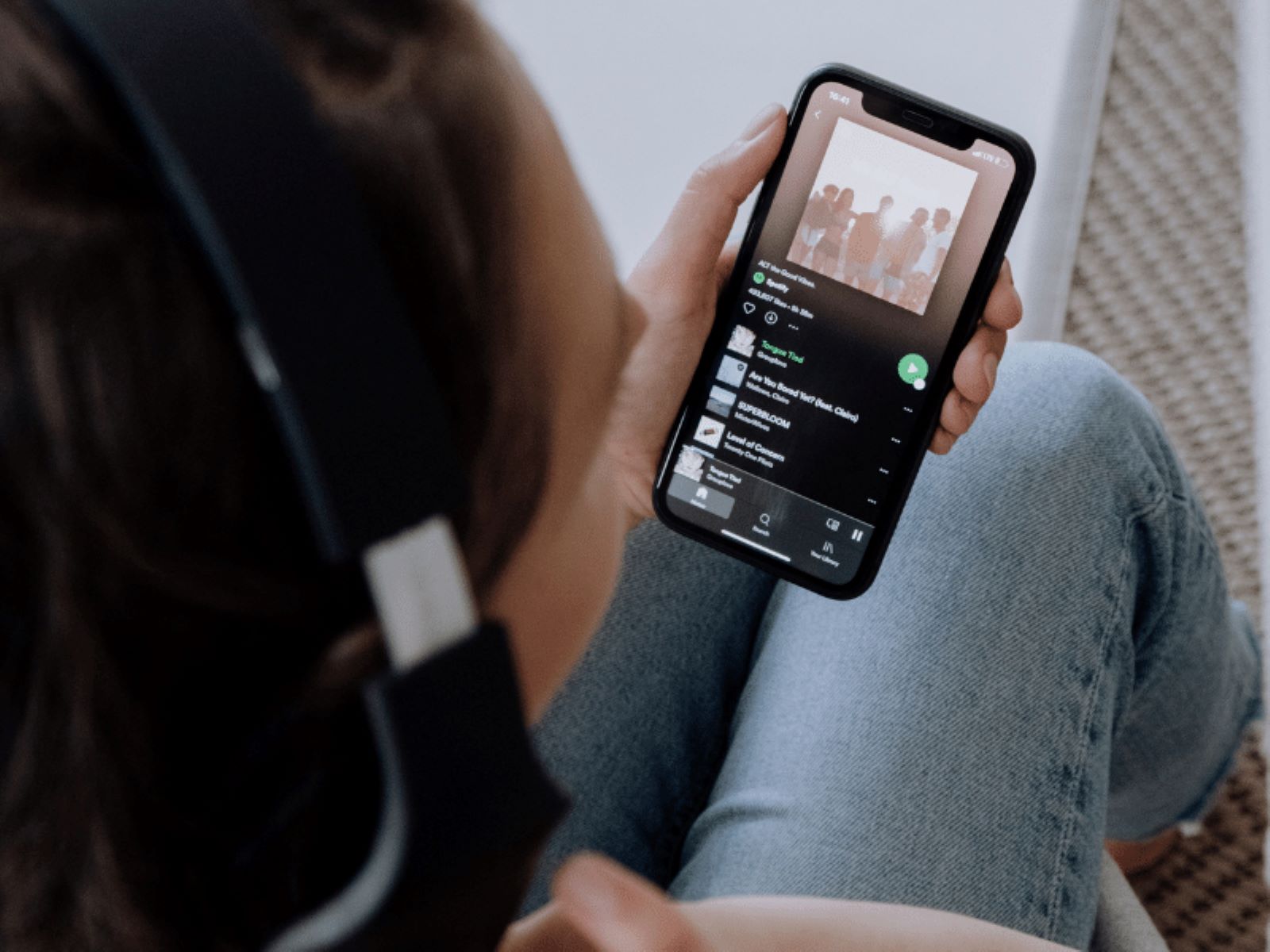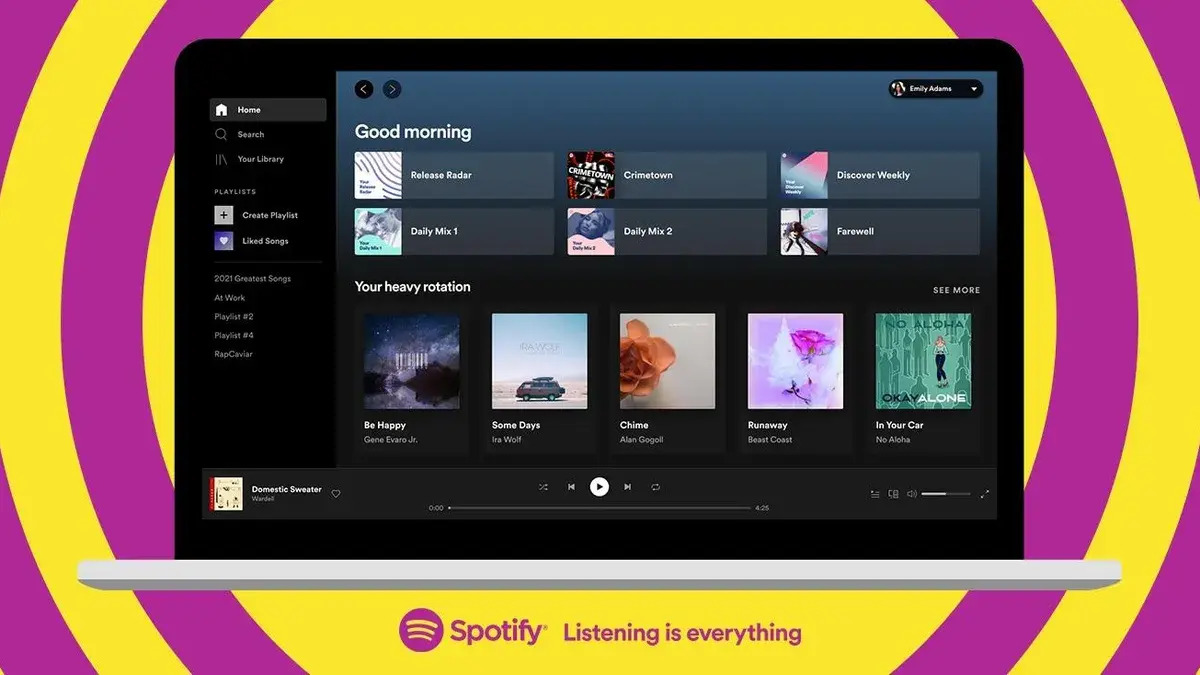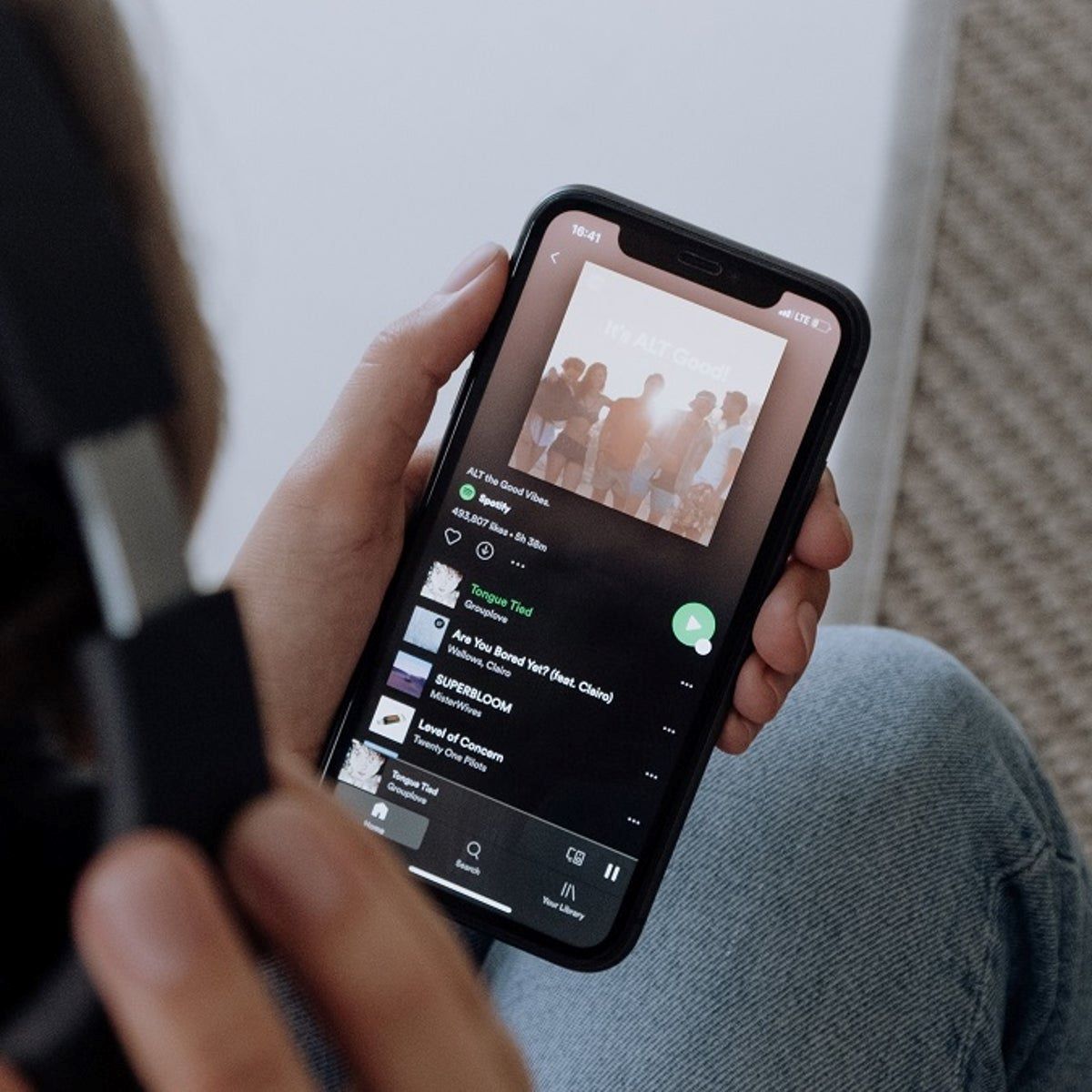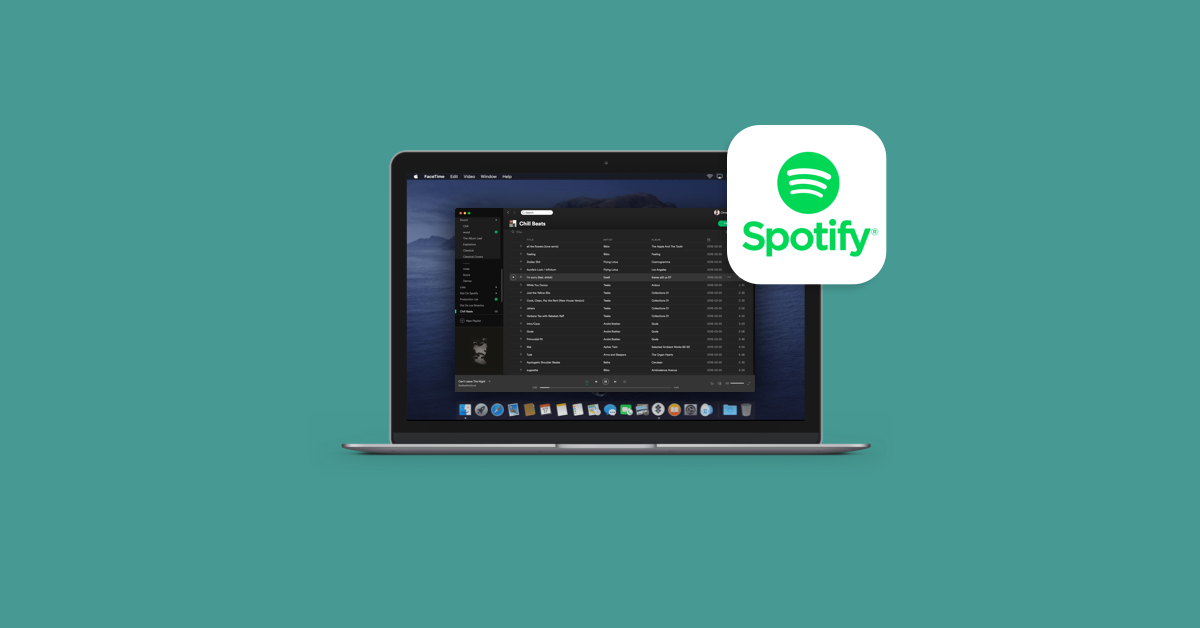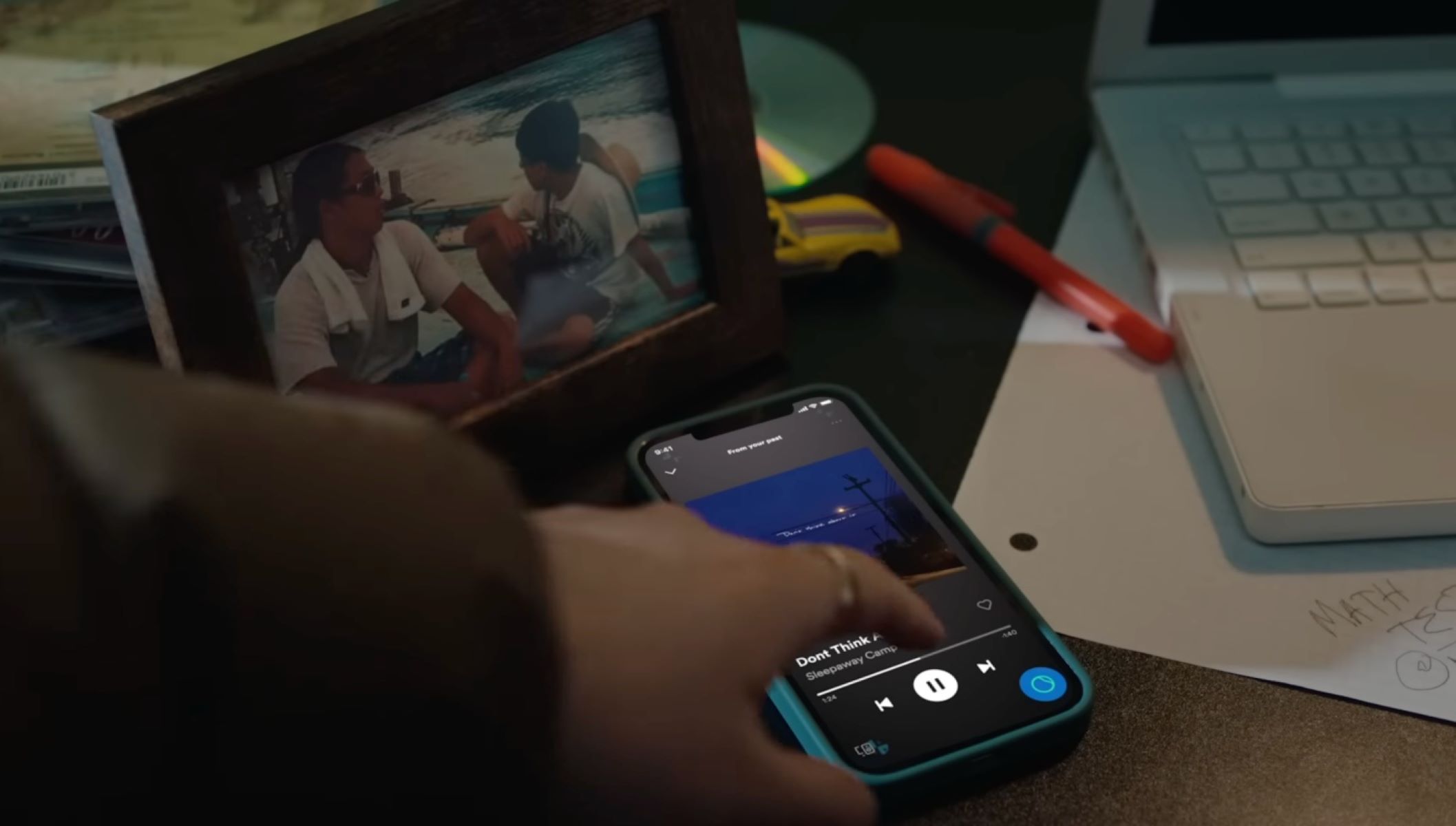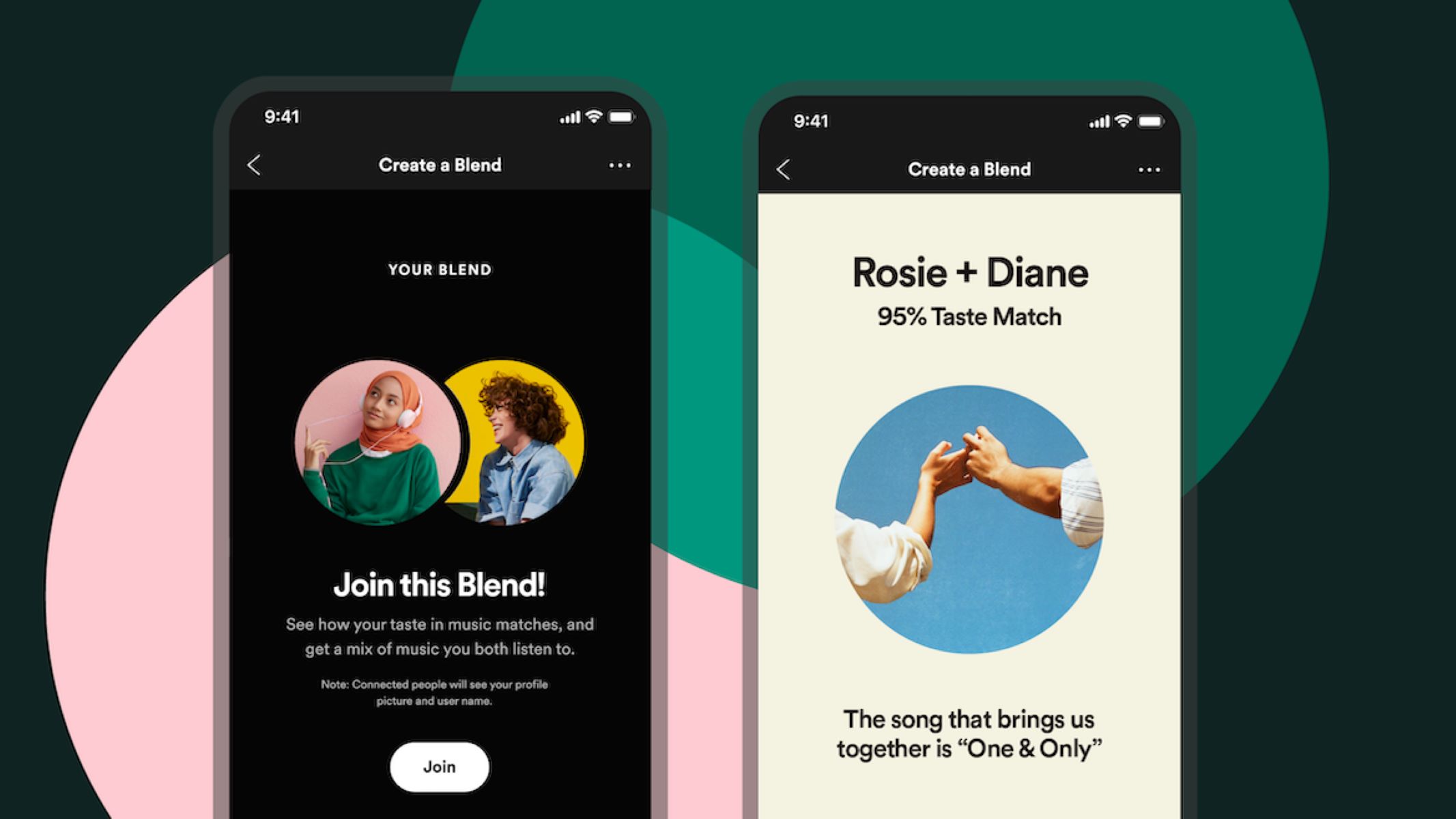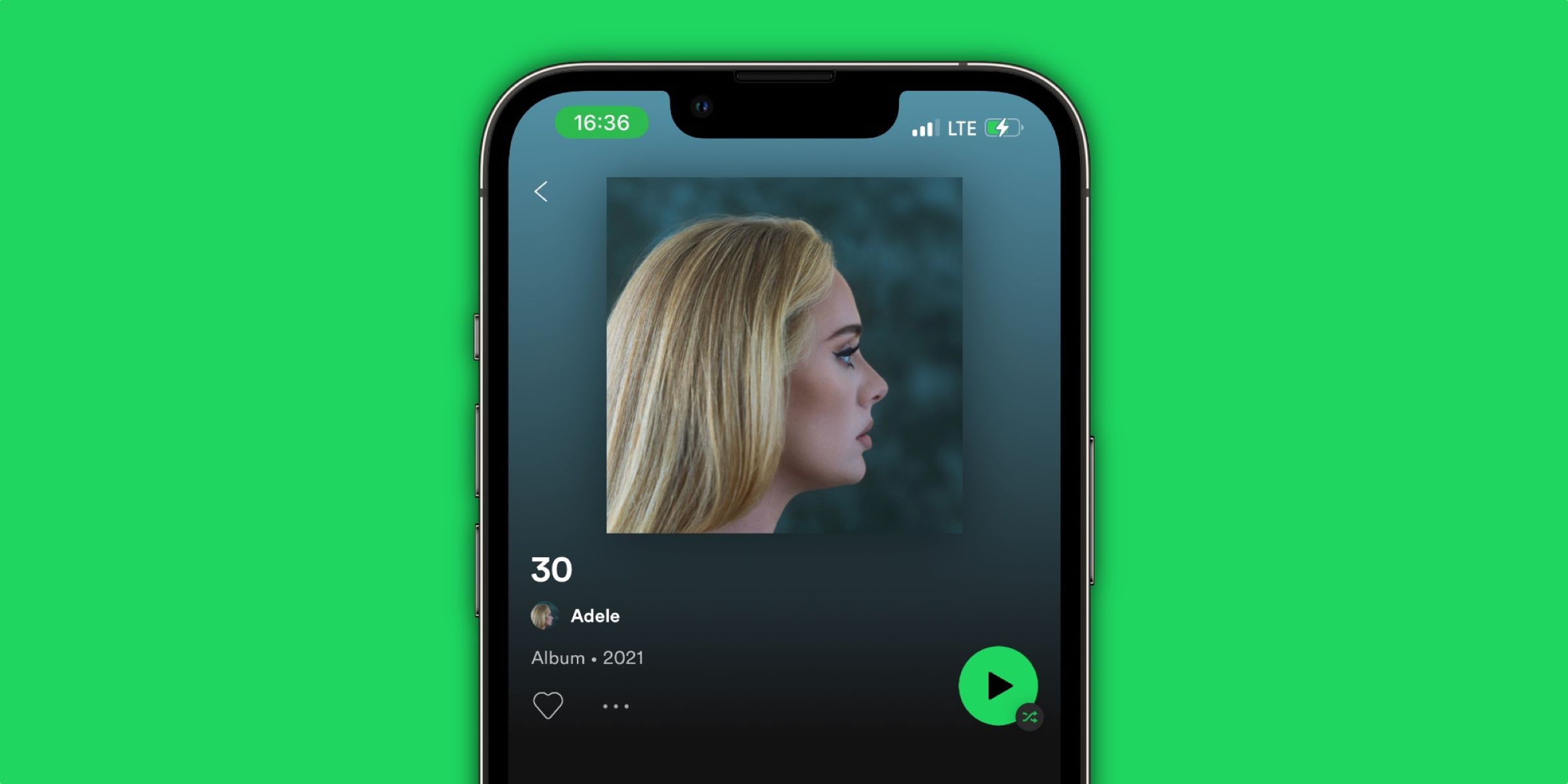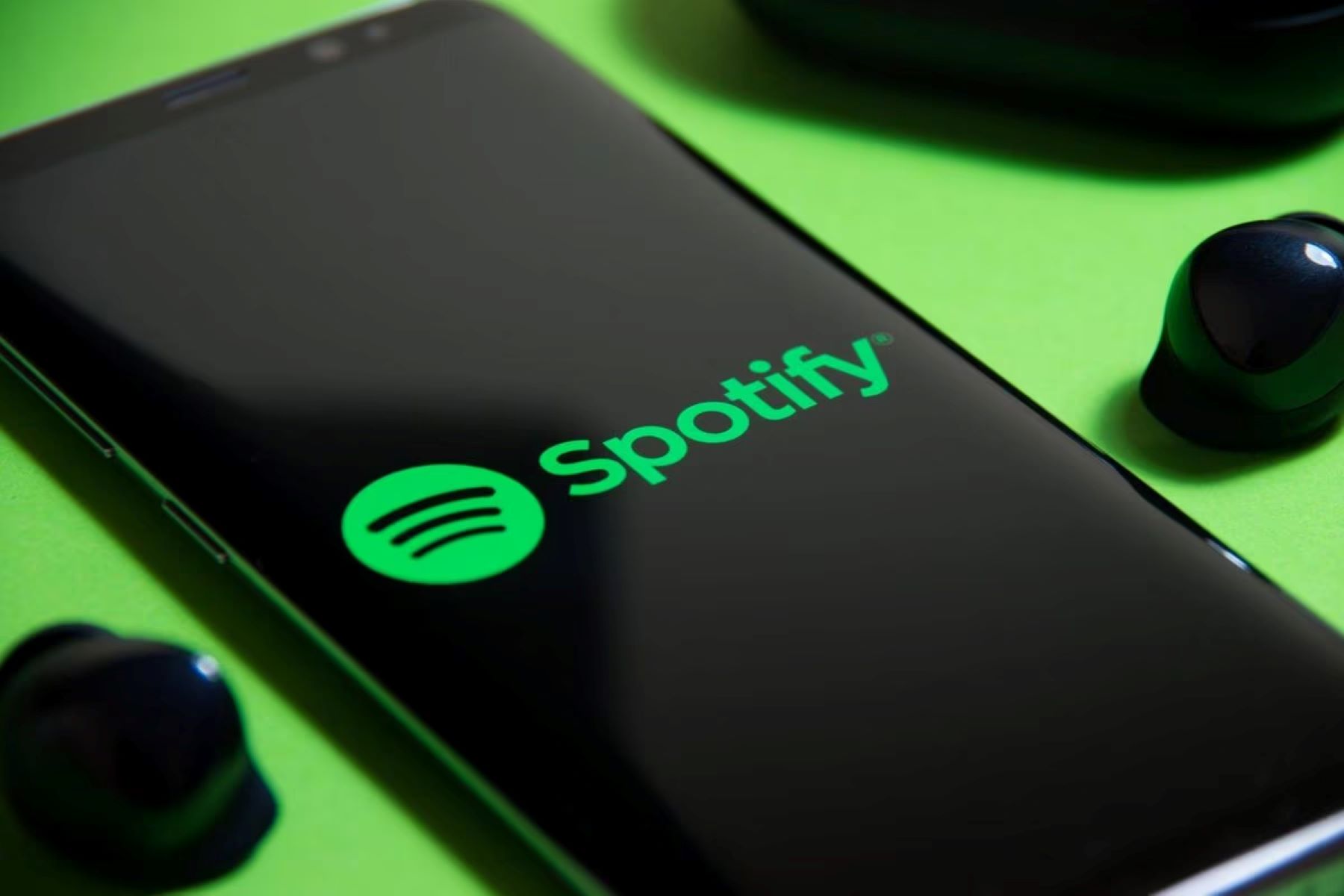Introduction
With over 286 million active users worldwide, Spotify has become one of the most popular music streaming platforms. As an artist or musician, getting your music on Spotify playlists can significantly boost your visibility and potentially help you reach a larger audience.
Playlists on Spotify are curated by both Spotify’s in-house team and independent curators, making them a powerful tool for discovery and promotion. Landing your tracks on these playlists can provide a substantial amount of exposure, increase stream counts, and even lead to new fans and opportunities.
In this article, we will explore the various strategies and techniques you can employ to secure placement on Spotify playlists. From creating high-quality music to building a strong fanbase and connecting with influential curators, we will delve into all the essential steps you need to take to increase your chances of playlist inclusion.
It’s important to note that getting on Spotify playlists is not a guarantee of success, but rather an integral part of a comprehensive music promotion strategy. By following the strategies outlined in this article, you can improve your chances of getting your music heard and reaching new listeners on the platform.
So, without further ado, let’s dive into the world of Spotify playlists and discover how you can harness their power to propel your music career forward.
Understanding the Importance of Spotify Playlists
Spotify playlists have revolutionized the way people discover and consume music. These carefully curated collections of songs have become go-to destinations for Spotify users looking for new music, personalized recommendations, and themed playlists for different occasions or moods.
For an emerging artist or musician, landing your tracks on Spotify playlists can have a significant impact on your career. Here are a few reasons why Spotify playlists are crucial for your music promotion:
- Increased Discoverability: Spotify playlists provide a platform for your music to be heard by a wider audience. Playlist placements can expose your music to potential fans who may not have discovered your tracks otherwise.
- Enhanced Credibility: Being featured on well-curated Spotify playlists can enhance your credibility as an artist. Listeners often view songs on playlists as vetted and high-quality, so inclusion can help you build a positive reputation.
- Stream Count and Revenue: Increased streams resulting from playlist placements can directly impact your streaming revenue. The more streams your songs receive, the higher your earnings from streaming platforms like Spotify.
- Algorithmic Recommendations: Successful placements on Spotify playlists can also improve your chances of being recommended by Spotify’s algorithm. The algorithm takes into account listeners’ preferences and behaviors, and if your music performs well on playlists, it may be recommended to other listeners with similar tastes.
- Networking Opportunities: Collaborating with playlist curators and influencers in your genre can open doors to potential networking opportunities. Building relationships with these individuals can lead to new fans, live performance opportunities, and even collaborations with established artists.
Understanding the importance of Spotify playlists will motivate you to focus on securing placements and incorporating them into your overall music promotion strategy. In the following sections, we will explore effective techniques and strategies you can employ to increase your chances of getting your music featured on these influential playlists.
Creating High-Quality Music
One of the first steps in getting your music on Spotify playlists is to ensure that you are creating high-quality music that stands out from the crowd. Playlist curators are constantly searching for fresh and unique tracks that will engage their listeners, so it’s essential to focus on the quality of your music. Here are a few key factors to consider:
- Production Quality: Invest time and effort in producing your music to a professional standard. This includes recording, mixing, and mastering your tracks. Poor production quality can detract from the listening experience and make it less likely for curators to consider your music for playlist inclusion.
- Strong Songwriting: Craft memorable and engaging songs that captivate listeners. Ensure that your melodies are catchy, your lyrics are meaningful, and your song structures are well thought out. A strong songwriting foundation will make your music more appealing to playlist curators and their audiences.
- Originality: Stand out from the crowd by showcasing your unique style and sound. While it’s important to be influenced by other artists, strive to bring something fresh and original to the table. Curators are more likely to gravitate towards artists who bring a unique perspective to their music.
- Professional Mixing and Mastering: Pay attention to the mixing and mastering process to ensure that your music sounds polished and balanced across different playback systems. A well-mixed and mastered track will have a better chance of catching the ear of playlist curators.
- Professional Artwork and Packaging: The visual aspect of your music is also important. Invest in professional album artwork and packaging to create a cohesive brand identity. Visually appealing artwork can catch the attention of playlist curators and increase the overall perception of your music.
Focusing on creating high-quality music will not only increase your chances of getting playlist placements but also enhance your overall music career. Take the time to refine your skills, experiment with different techniques, and never stop striving for improvement.
Now that we’ve discussed the importance of quality in your music, let’s move on to the next steps in the journey towards getting your music on Spotify playlists.
Building a Strong Fanbase
Having a strong fanbase is a crucial asset when it comes to getting your music on Spotify playlists. Playlist curators often look for artists who already have an engaged and dedicated fan following. Here are some effective strategies to build a strong fanbase:
- Engage with Your Audience: Connect with your existing fans through social media, live performances, and online platforms. Respond to messages, comments, and feedback. Building a personal connection with your fans creates a loyal and supportive community around your music.
- Optimize Your Social Media Presence: Utilize social media platforms like Instagram, Twitter, Facebook, and YouTube to promote your music, engage with fans, and share updates about your musical journey. Regularly post content, such as behind-the-scenes videos, live performances, and interactions with your fans.
- Collaborate with Other Artists: Collaborations with other artists in your genre can expose your music to their fanbase and vice versa. Look for opportunities to collaborate on songs, performances, and social media campaigns. Cross-promotion can significantly help in expanding your reach and building a stronger fanbase.
- Live Performances: Take advantage of live performances to connect directly with your fans and attract new ones. Play at local venues, music festivals, and community events. Engage with the audience, create memorable experiences, and promote your music during these performances.
- Create Compelling Content: Share engaging content beyond your music, such as behind-the-scenes videos, vlogs, interviews, and other creative projects. This helps to humanize your brand and deepen the connection with your fans.
Remember, building a strong fanbase takes time and consistent effort. It’s about creating a genuine connection with your audience and cultivating a community around your music. This dedicated fanbase will not only support you in getting your music on Spotify playlists but also provide a solid foundation for your music career.
Now that we have covered the importance of building a strong fanbase, let’s explore how you can effectively network with curators and influencers to give your music a better chance of playlist inclusion.
Networking with Curators and Influencers
Building connections with playlist curators and influencers in the music industry is essential for increasing your chances of getting your music on Spotify playlists. These individuals have the power to introduce your music to new audiences and provide valuable opportunities for exposure. Here are some effective strategies for networking with curators and influencers:
- Research and Identify Curators and Influencers: Spend time researching and identifying the curators and influencers who specialize in your genre. Look for playlists that align with your style and sound. Utilize platforms like Soundplate, PlaylistPush, and PlaylistCurators to find relevant curators who accept submissions.
- Engage on Social Media: Follow and engage with curators and influencers on social media platforms like Twitter, Instagram, and LinkedIn. Interact with their posts, share their content, and show genuine interest in their work. Building a relationship through social media can help you establish a connection and gain visibility.
- Attend Networking Events and Conferences: Look for music industry events, conferences, and workshops where curators and influencers may be present. These events provide valuable opportunities to meet and connect with the people who can help promote your music. Be prepared with your elevator pitch and have promotional materials ready to share.
- Personalize Your Approach: When reaching out to curators and influencers, avoid generic, copy-paste messages. Personalize your approach by mentioning specific playlists or projects they are working on and explain why you think your music would be a good fit. Show genuine enthusiasm for their work and express your appreciation for their contributions to the music industry.
- Offer Value: Instead of focusing solely on what you can gain from networking, think about how you can provide value to curators and influencers. Share their playlists with your own network, offer to collaborate on promotional initiatives, or provide exclusive content for their platforms. By offering value, you build mutually beneficial relationships.
Remember, networking is a continuous process, and building relationships takes time. Be patient, persistent, and genuine in your interactions. Cultivating strong connections with curators and influencers can open doors to playlist placements and other promotional opportunities for your music.
Now that we’ve explored the importance of networking, let’s move on to the next step in the process: submitting your music to Spotify playlists.
Submitting Your Music to Spotify Playlists
Once you have created high-quality music, built a strong fanbase, and networked with curators and influencers, it’s time to submit your music to Spotify playlists. Spotify offers various avenues for artists to submit their tracks for consideration. Here’s how you can effectively submit your music:
- Research Relevant Playlists: Identify playlists that align with your genre, sound, and target audience. Look for both major playlists curated by Spotify and independent playlists curated by influential individuals in the music industry.
- Pitch to Spotify Curators: Use Spotify for Artists to pitch your music to the in-house editorial team at Spotify. This platform allows you to provide information about your track, such as genre, theme, and a pitch explaining why your music is a good fit for the playlist. Make sure to follow the guidelines and provide any necessary supporting materials.
- Utilize Third-Party Submission Platforms: Take advantage of third-party submission platforms like SubmitHub, Groover, and Playlist Push. These platforms connect artists with playlist curators and provide opportunities to submit your music directly to them for consideration. Some platforms charge submission fees, so carefully research and choose the ones that best suit your needs.
- Follow Submission Guidelines: Read and follow the submission guidelines provided by the curators or platforms. Pay attention to any specific requirements, such as preferred file formats, song lengths, or submission deadlines. Failing to adhere to these guidelines could result in your music being overlooked.
- Personalize Your Submissions: When submitting your music, take the time to personalize your messages. Mention the curator or platform by name, indicate your familiarity with their playlists, and explain why you believe your music is a good fit. Avoid sending generic, mass emails, as personalized submissions are more likely to catch the curator’s attention.
- Follow Up Professionally: If you do not hear back from curators or platforms after submitting your music, it’s okay to follow up politely. However, avoid being pushy or sending multiple follow-up messages. Respect their time and be patient while awaiting a response.
Remember, playlist placements are competitive, and not every submission will be accepted. Be prepared for potential rejections and continue refining your music and promotional strategies.
Now that we’ve covered how to submit your music to Spotify playlists, let’s move on to the next step: engaging with your audience and driving streams.
Engaging with Your Audience and Driving Streams
Engaging with your audience and driving streams is a crucial aspect of promoting your music on Spotify and maximizing your chances of playlist placements. Here are some effective strategies to engage with your audience and encourage streams:
- Interact on Social Media: Social media platforms offer a direct line of communication with your fans. Respond to comments, messages, and questions. Engage in conversations, host Q&A sessions, and share behind-the-scenes content. By being active and responsive, you show your audience that you value their support.
- Create Engaging Content: Utilize platforms like YouTube, Instagram, and TikTok to create engaging content related to your music. Share acoustic performances, lyric videos, cover songs, or choreographed dance routines. Entertaining and visually appealing content can generate excitement and drive streams.
- Promote Collaborative Projects: Collaborate with other artists or influencers to create unique projects that generate buzz and interest. This can include joint singles, music videos, or special live performances. The shared exposure can attract new listeners and increase streams for everyone involved.
- Host Giveaways and Contests: Running giveaways and contests can incentivize your audience to stream your music and engage with your content. Offer exclusive merchandise, concert tickets, or personalized experiences as prizes to encourage participation. Leverage social media platforms to promote and manage these activities.
- Create and Share Playlists: Curate your own playlists on Spotify to showcase your favorite tracks, including your own music. Share these playlists with your audience and encourage them to follow and share them. This indirectly promotes your music while providing value to your fans.
- Collaborate with Influencers: Partner with influencers or popular content creators who align with your genre and target audience. Collaborations can include featuring your music in their videos, playlists, or podcasts. Their existing fanbase can be a valuable source of new listeners and potential followers on Spotify.
Remember, engaging with your audience is an ongoing process. Consistently provide valuable and entertaining content, respond to their feedback, and make them feel involved in your musical journey. By fostering a strong connection with your audience, you can drive streams, increase engagement, and improve your chances of playlist placements.
Now that we’ve discussed engaging with your audience, let’s move on to the importance of tracking and analyzing your success on Spotify.
Tracking and Analyzing Your Success on Spotify
Tracking and analyzing the performance of your music on Spotify is crucial for understanding what’s working, identifying areas for improvement, and refining your music promotion strategies. Spotify provides several tools and features that can help you track and analyze your success on the platform:
- Spotify for Artists: Utilize the Spotify for Artists platform to access valuable insights and data about your music. You can track your streams, playlist placements, follower demographics, and listener engagement. Use this information to understand which songs are resonating with your audience and to identify opportunities for growth.
- Playlist Statistics: Keep an eye on the performance of your tracks within playlists. Spotify’s playlist statistics feature provides data on the number of streams, saves, and followers that your music generates from playlist placements. This data can help you identify which playlists are driving the most engagement and tailor your pitching and promotional strategies accordingly.
- Streaming Analytics: Dive into the streaming analytics provided by Spotify to understand the geographical locations of your listeners, demographic information, and trends in your streaming numbers over time. This information can help you identify target markets, refine your marketing efforts, and plan future releases effectively.
- Engagement Metrics: Pay attention to the engagement metrics provided by Spotify, such as listener retention and skip rates. These metrics give you insights into how your audience is interacting with your music. By studying these patterns, you can make adjustments to your song structures, production choices, or marketing strategies to improve listener engagement and retention.
- External Analytics Tools: Consider using external analytics tools, such as Chartmetric or SpotOnTrack, to gain deeper insights into your Spotify performance. These tools provide comprehensive analytics and benchmarking capabilities to help you understand how your music is performing in comparison to other artists and industry trends.
Regularly track and analyze your success on Spotify to make data-driven decisions and refine your music promotion strategies. Use the insights gained to adapt your approach, target specific audiences, and focus on the aspects that resonate most with your listeners.
Now that we’ve explored the importance of tracking and analyzing your success on Spotify, let’s summarize the key points discussed in this article.
Conclusion
Securing placement on Spotify playlists can significantly enhance the reach and visibility of your music. By following the strategies outlined in this article, you can increase the chances of getting your tracks featured on influential playlists and reaching a wider audience. Here’s a recap of the key steps:
First and foremost, focus on creating high-quality music that stands out from the crowd. Invest in professional production, strong songwriting, and originality to capture the attention of playlist curators and listeners.
Building a strong fanbase is equally important. Engage with your audience, optimize your social media presence, collaborate with other artists, and create compelling content to cultivate a loyal and supportive community around your music.
Networking with curators and influencers opens doors to valuable opportunities. Research and connect with relevant playlist curators and influencers, attend networking events, personalize your approach, and offer value to establish meaningful relationships.
When submitting your music to Spotify playlists, research relevant playlists, pitch to Spotify curators, and utilize third-party submission platforms while following guidelines and personalizing your submissions.
Engaging with your audience and driving streams is crucial. Interact on social media, create engaging content, promote collaborative projects, host giveaways, and create and share your own playlists to keep your audience engaged and increase streams.
Finally, track and analyze your success on Spotify using the tools and features available to gain insights into your performance. Use this data to refine your strategies, target specific audiences, and make informed decisions about your music promotion efforts.
Remember, promoting your music on Spotify requires consistency, perseverance, and adaptability. Stay true to your unique sound, continuously improve your craft, and embrace opportunities for growth. With dedication and the right strategies, you can increase your chances of getting on Spotify playlists and paving your path to success in the music industry.







